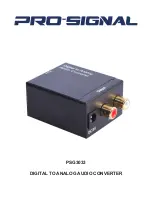
Angle (deg)
Mag
netic Flux
Den
sity (m
T)
0
45
90
135
180
225
270
315
360
-24
-20
-16
-12
-8
-4
0
4
8
12
16
20
24
Input 1
Input 2
Figure 1-1. Sine and Cosine Inputs
With outputs of this form, use
to describe the absolute angle.
Out1 = sin θ
(1)
Out2 = cos θ
(2)
tan θ =
Out1
Out2
(3)
θ = atan
Out1
Out2
(4)
As
shows, determine the angle by calculating the arctangent of the ratio of the two outputs. To
simplify this calculation step in software, use the atan2() function available in many coding libraries. This function
automatically considers the sign of each input and applies adjustments to produce an output ranging from ±180°.
An additional option is to use a device with an integrated CORDIC calculator.
approximates a binary search by performing vector rotations and has been optimized for digital logic. Devices
such as
are capable of generating angle outputs using the device outputs with
minimal total system latency.
Linear Hall-effect solutions may be implemented in the following arrangements, which will be explored in more
detail in
.
• 1D In-Plane
• 1D Off-Axis
• 3D In-Plane
• 3D Off-Axis
• 3D On-Axis
System Description
Absolute Angle Encoder Reference Design With Hall-Effect Sensors for
Precise Motor Position Control
3
Copyright © 2022 Texas Instruments Incorporated




































